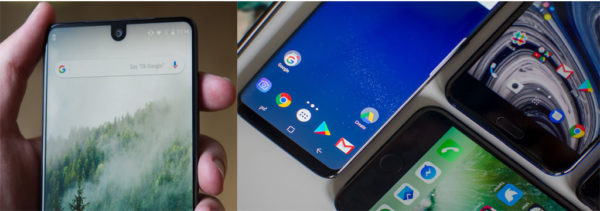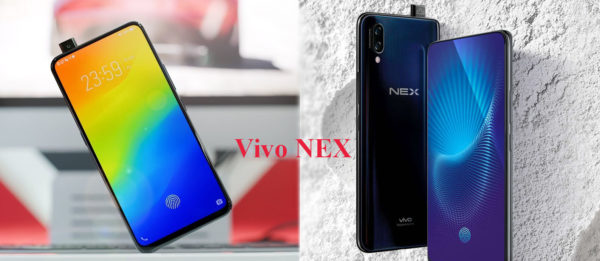Evolution of the Full-View Display
From the last quarter of 2017 to the start of 2018, the notch was the epitome of design for smartphones. However, some China-based brands have decided to forego the notch and instead use a popup mechanical camera slider.
The notch was first introduced on the iPhone X. Other manufacturers followed this trend by putting a notch on their Android smartphones like Asus Zenfone 5, OnePlus 6, etc.
But this idea was more of a hack. Manufacturers have always wanted phones with no bezels.
Then the very first device with a full view display came from Xiaomi, the Mi Mix. The device had flagship grade specs but it wasn’t able to make much of an impact because of its high price, bad camera quality and awkward position of the front-facing camera.
After that, they launched Mix 2 but still could not make an impact.
In between this, many other phones arrived, some with infinity display like the Galaxy S8 and others with a notch like I mentioned earlier.
At CES 2018, Vivo introduced X21. The phone has an under-display fingerprint scanner providing more area for display. They had eliminated the bezels at the bottom with an under-display fingerprint sensor. But there was still a notch at the top.
A few days back, Vivo introduced the Vivo Nex with a tall 6.59″ 19.3:9 aspect-ratio HD+ display. Moreover, the phone is high-specced: its powered by a Qualcomm Snapdragon 845 chipset, 8GB of LPDDR4 RAM and 128 or 256GB onboard storage.
On the software side, it comes with Android Oreo out of the box. I do not really fancy Funtouch OS as it looks like a sad clone of iOS.
In the camera department, it comes with dual 12 MP (f/1.8, 1/2.5″, 1.4µm, Dual Pixel PDAF) + 5 MP (f/2.4), 4-axis OIS rear-facing camera with phase detection autofocus, and dual-LED dual-tone flash, and 8mp pop-up f/2.0 front-facing camera.
So what exactly is a pop-up camera?
At least for now, it is the ultimate solution for more screen real-estate.
They put the front-facing camera inside the top corner of the phone. When you open the camera and attempt to take a selfie, the camera peeks from the top accompanied by motorized sounds.
But it does not end here.
Oppo has done something even more interesting with the Oppo Find X. It is a full-screen phone with flagship specs and a mechanical sliding camera.
The Oppo Find X comes with a 6.42″ display with 19.5:9 aspect-ratio with HD+ resolution which is a slightly taller than the Vivo X21.
Apart from that, the device is powered by the same Snapdragon 845 chipset along with 8GB of RAM and 256GB of on-board storage.
They also have done good work on camera department it’s come with dual 16 MP (f/2.0, PDAF, OIS) + 20 MP (f/2.2) rear-facing camera with phase detection autofocus and dual-LED dual-tone flash, and 25 MP front-facing camera.
Both cameras are hidden under the body. As you can see in the image, it will pop the slider up whenever you use the camera including unlocking the phone using face unlock.
I will not talk about the performance or pros or cons now because these phones are prototypes with unfinished software and hardware. So, stay tuned for more information on these phones.
About the author:

I’m Biplab Das, a technical writer, tech YouTuber, blogger, ICT tutor and a part time website developer. People say smartphones are boring these days, but I think everyone is beginning to take this wonderful technology marvel for granted. Please don’t forget to subscribe to my YouTube channel MoboMotion.


















